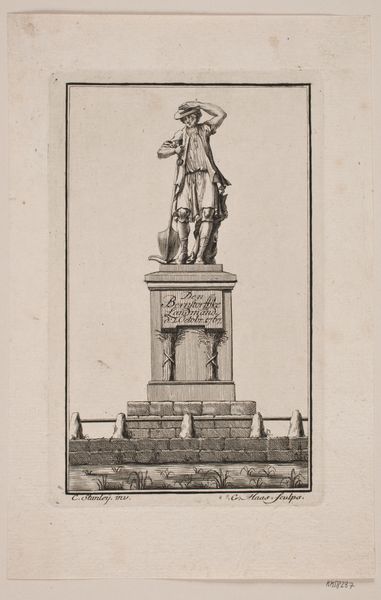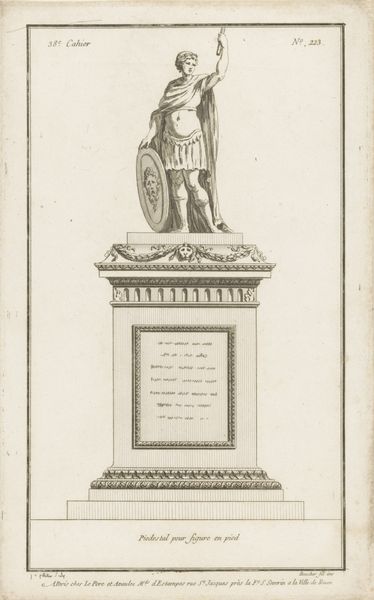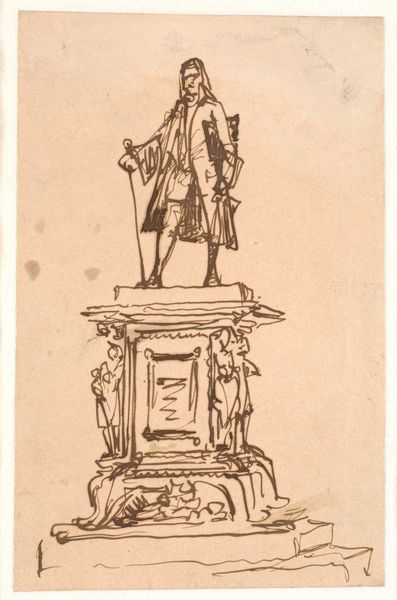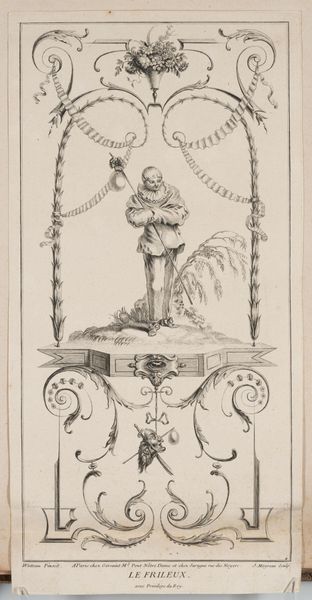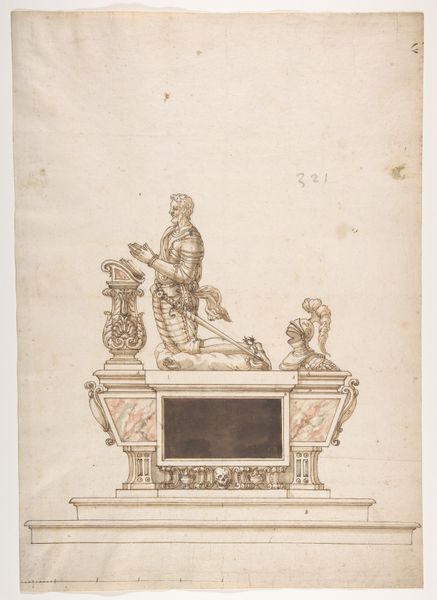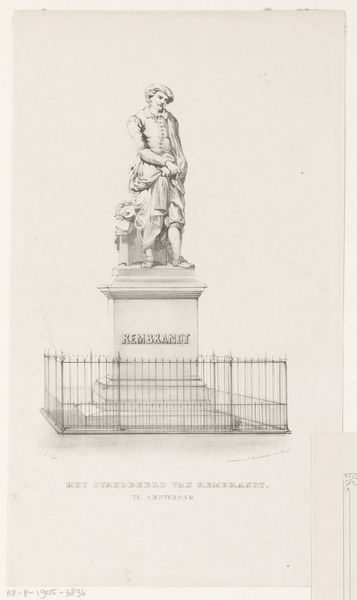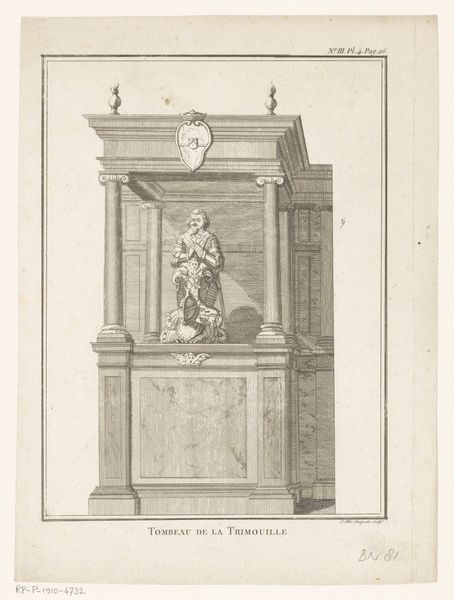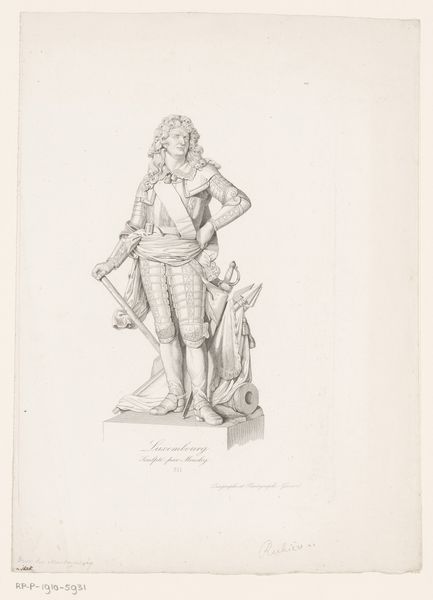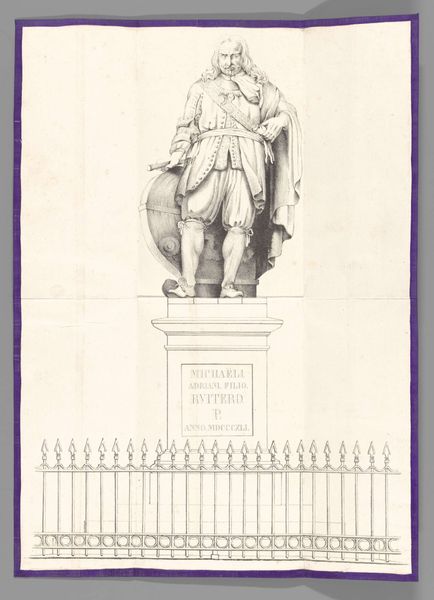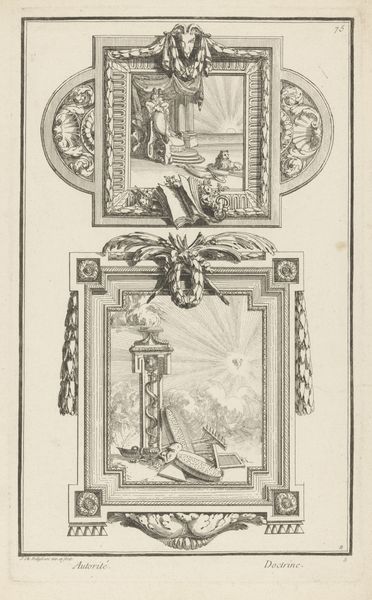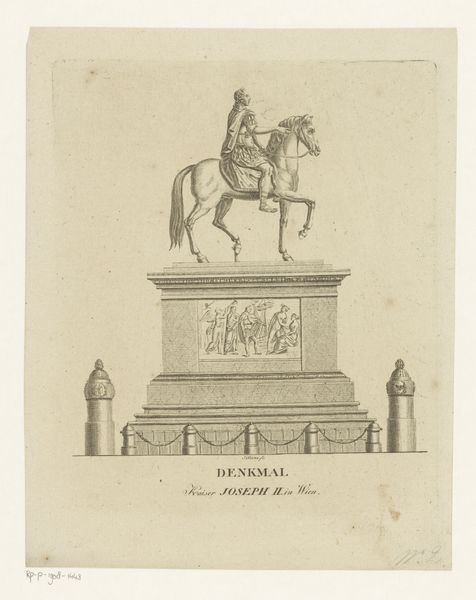
Dimensions: sheet: 18 1/16 x 14 1/2 in. (45.8 x 36.8 cm)
Copyright: Public Domain
Curator: Standing before us is an intriguing drawing entitled "Design for a Clock," crafted sometime in the 18th century by an anonymous artist. It's currently held in the collection of the Metropolitan Museum of Art. Editor: My first impression is the incredible detail. The rendering has an almost sculptural quality, but something feels...off about the composition, though. Curator: Well, the Neoclassical style emphasizes order and symmetry, echoing back to the idealized forms of classical antiquity. But what strikes me most is how this design intersects with the period's burgeoning fascination with time and its management, reflected in new political and economic orders. Editor: Absolutely, and notice how meticulously the ornamental base is rendered – those acanthus leaves practically jump off the page. It speaks to the skilled labor involved in bringing such an object to life, all those hours of carving. Do you see the actual labor this entails to turn from drawing to finished product? Curator: Precisely. Clocks weren’t just time-telling devices; they were symbols of power and progress, indicative of societal organization, especially at a moment when industry and empire were advancing. The inclusion of the military figure, with his sword and confident posture, clearly contributes to that sentiment. Editor: That figure, seemingly a triumphant general, looms over the clock face itself, doesn't he? Leaning almost casually. This might be a meditation on leadership. Does controlling time allow him to exert control in a political field? The composition feels designed to instill authority by literally dwarfing time itself, no? Curator: Exactly. Time here is being conquered or, perhaps more aptly, managed for the purposes of projecting and maintaining military and political authority. Think how powerful such imagery would have been in an era of revolution. Editor: This reminds us of how drawings can contain and convey immense symbolic and political weight, just like more “finished” artwork can. That connection to manufacture – design, draftsmanship, patronage, production, is usually invisible to museumgoers, right? I will consider the labor and economy from now on when seeing these types of design works! Curator: Yes, thinking through the life and afterlife of these objects, both designed and produced, provides essential social context to understanding our history.
Comments
No comments
Be the first to comment and join the conversation on the ultimate creative platform.
